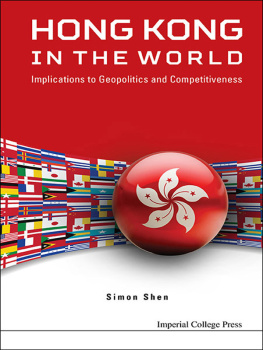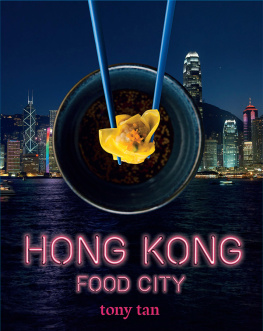Yi Sun
Zhejiang University, Hangzhou, China
ISBN 978-981-33-6577-3 e-ISBN 978-981-33-6578-0
https://doi.org/10.1007/978-981-33-6578-0
Jointly published with Zhejiang University Press
The print edition is not for sale in China (Mainland). Customers from China (Mainland) please order the print book from: Zhejiang University Press.
Zhejiang University Press 2021
This work is subject to copyright. All rights are solely and exclusively licensed by the Publisher, whether the whole or part of the material is concerned, specifically the rights of reprinting, reuse of illustrations, recitation, broadcasting, reproduction on microfilms or in any other physical way, and transmission or information storage and retrieval, electronic adaptation, computer software, or by similar or dissimilar methodology now known or hereafter developed.
The use of general descriptive names, registered names, trademarks, service marks, etc. in this publication does not imply, even in the absence of a specific statement, that such names are exempt from the relevant protective laws and regulations and therefore free for general use.
The publishers, the authors, and the editors are safe to assume that the advice and information in this book are believed to be true and accurate at the date of publication. Neither the publishers nor the authors or the editors give a warranty, express or implied, with respect to the material contained herein or for any errors or omissions that may have been made. The publishers remain neutral with regard to jurisdictional claims in published maps and institutional affiliations.
This Springer imprint is published by the registered company Springer Nature Singapore Pte Ltd.
The registered company address is: 152 Beach Road, #21-01/04 Gateway East, Singapore 189721, Singapore
Acknowledgements
Part of Chapter From Hong Kong to the Mainland: Milkyways Production and Business Practices has previously been published under the title of Renationalisation and Resistance of Hong Kong Cinema: Milkyway Images Journey to Mainland of China in Inter-Asia Cultural Studies, 19 (2), 2018.
Chapter Shaping Hong Kong Cinemas New Icon: Milkyway at International Film Festivals has previously been published under the same title in Transnational Cinemas, 6 (1), 2015.
Chapter Building a Hong Kong Studio Brand: Milkyways Changing Image in Overseas Critical Reception has previously been published under the same title in Canadian Journal of Film Studies, 26 (2), 2017.
Introduction
More than twenty years ago, in 1997, the Peoples Republic of China resumed the exercise of sovereignty over Hong Kong. As a Special Administrative Region (SAR) of a nation state, Hong Kong began to reintegrate into a Chinese national context. During the past two decades, China instituted a range of policies attempting to nationalise and homogenise the SAR. In particular, the signing of the Mainland and Hong Kong Closer Economic Partnership Arrangement (CEPA) in 2003 strongly encouraged trade and investment cooperation between the two sides as well as the integration of Chinese Mainland and Hong Kong industries. The CEPAs supplementary clauses on cinematic products substantially affected Hong Kong cinema, as MainlandHong Kong co-produced films would not be bounded by quota limits and could enjoy distribution privileges in the Mainland as domestic films do. As a consequence of such policies, the Hong Kong film industry significantly increased collaboration and developed partnerships with the Mainland film industry, retargeted the Mainland as its major market, and even began to relocate to the Mainland.
The reintergration of Hong Kongs industries, including the film industry, into the Mainland was also a result of the growth and expansion of the Chinese economy. In the last decade, China developed into the worlds second-largest economy, only next to the United States. The Chinese Mainland has become one of the most lucrative markets for any business. The booming economy fuelled the development of the national film industry. Large capital flows, the industrialisation of the film sector, and the further liberalisation of the film market contributed to a flourishing Chinese film industry. On the international stage, Chinese-language films attracted increasing attention from festival programmers, distributors, scholars and critics. Chinas economic power and the ascent of Chinese-language cinema provided Hong KongMainland co-productions with resources and opportunities that in turn stimulated the increased proliferation of co-productions.
Compared to the Chinese Mainlands tremendous growth, Hong Kongs economy had been struggling through the past two decades. In the return year, 1997, the Asian financial crisis, which started from Southeast Asia and spread all across Asian countries, hit Hong Kong hard while the Chinese Mainland was significantly less impacted. Local industries, including the film industry, were severely affected. After the 1997 financial crisis, even though there have been ups and downs, Hong Kongs economic growth generally remained sluggish. Once one of the Four Asian Tigersstrong economies of Hong Kong of China, Singapore, R. O. Korea and Taiwan of Chinaand better off than the Chinese Mainland, Hong Kong has been losing its economic edge and fell behind its motherland in economic terms. The situation for the local film industry was similar to that for the local economy. Financial crises and economic downturns in Hong Kong and its traditional overseas markets, such as Southeast Asia and R. O. Korea, among other factors, pushed the Hong Kong film industry into recession, and the industry has never recovered its strength thereafter. The industry, which had been the third largest in the world (after Hollywood and Bollywood), lost its leading position in Asia and began to increasingly rely on the Chinese Mainland market and investment, creating conditions for the Chinese Mainland cinemas assimilation of Hong Kong cinema.
However, Hong Kongs return to China, as well as the incorporation of Hong Kongs industries and cultures into a Chinese context, has not been peaceful due in part to clashes at the cultural and ideological levels. There was a profound fear among the local community, including the cultural and film community, that local culture would melt and disappear. Regarding cinema, scholars such as Ackbar Abbas (1997) described Hong Kong cinema as a culture of disappearance: it was about, and was itself, fading away. Since the mid-1990s, there has been a recurring idea that Hong Kong cinema was dying. Local critics strove to protect Hong Kongs film culture, preserve local cinemas legacies and independence. For the local cultural community, it was crucial that Hong Kong cinema remain creative, pluralistic, self-expressive and self-reflexive.
The image of Hong Kong cinema, however, is always shaped from both inside and outside of Hong Kong. The concept of Hong Kong cinema and its associations, such as commercial genre filmmaking and boundless creativity, largely derived from overseas viewers responses to Hong Kong films since the 1980s. The reputation of Hong Kong cinema has also been a result of local filmmakers and film companies engagement with various forces within the international film industry and community. During the postcolonial years, Hong Kong films (as MainlandHong Kong co-productions for much of the time) continued to appear at international film events and circulate around the world. The films and interpretations of them offered by a global audience redefined Hong Kong cinema and created perceptions of a post-return Hong Kong cinema. The perceptions could be in conflict with each other and might disagree with understandings of the cinema from inside of Hong Kong. In the global distribution of Hong Kong films, for example, one finds that Hong Kong cinema remained closely and primarily associated with the action genre as it had been in the pre-return era. On the international film festival circuit, for example, Hong Kongs post-return genre productions were raised to the status of quality and art-house films. At other times, such as in the overseas critical reception of Hong Kong films, it was about Hong Kong cinemas up-and-coming auteur directors that overseas critics and reviewers cared about most. Hong Kong cinemas image changes, as the films travel across contexts and are positioned by different players in the international film community. Likewise, the knowledge surrounding the cinema is in constant revision.













